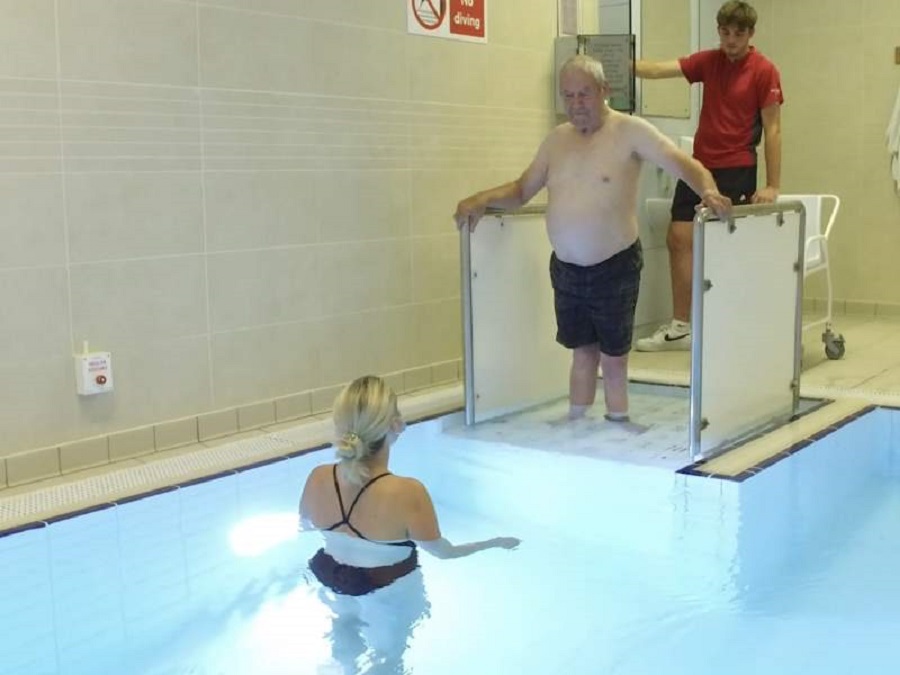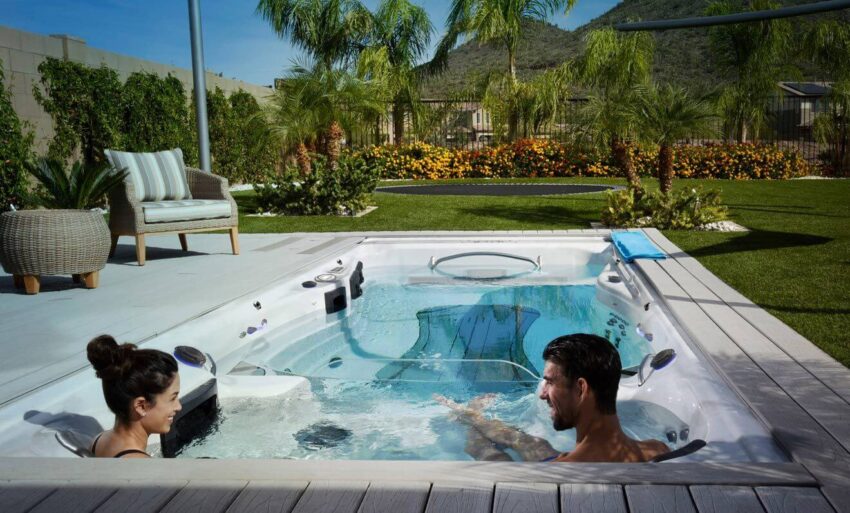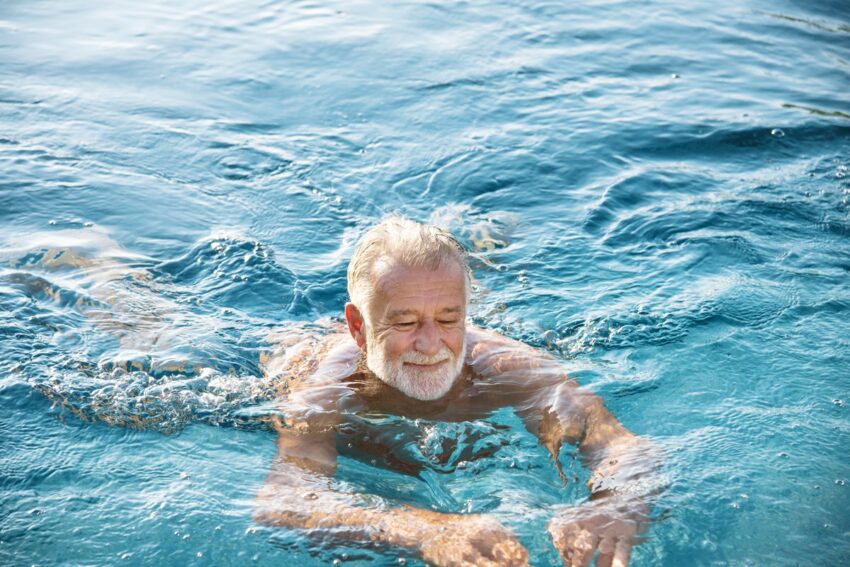Are you one of the millions of people suffering from arthritis and looking for effective ways to manage your joint pain? If so, hydrotherapy might be the solution you’ve been seeking. Hydrotherapy, also known as aquatic therapy or water therapy, involves using warm or cold water to alleviate pain, reduce inflammation, and improve mobility. In this article, we will explore the benefits, exercises, and treatment options associated with arthritis hydrotherapy.
Understanding Arthritis Hydrotherapy
Arthritis is a chronic condition that causes inflammation and pain in the joints, affecting millions of individuals worldwide. Traditional treatments such as medication and physical therapy can provide relief, but some people seek alternative approaches that are gentle, yet effective. This is where arthritis hydrotherapy comes into play.
Hydrotherapy, including colon hydrotherapy, utilizes the therapeutic properties of water to alleviate pain and improve joint function. It can be performed in various settings, including heated pools, hot tubs, or even natural bodies of water. The buoyancy and resistance water offers create an ideal environment for gentle exercises and rehabilitation.

Types of Arthritis and Their Impact on Joint Health
Before delving deeper into hydrotherapy, it is important to understand the different types of arthritis and how they affect joint health. The two most common forms of arthritis are rheumatoid arthritis (RA) and osteoarthritis (OA).
Rheumatoid arthritis is an autoimmune disease in which the body’s immune system mistakenly attacks its own joints, leading to chronic inflammation and pain. Osteoarthritis, on the other hand, is caused by wear and tear of the joints over time, resulting in the breakdown of cartilage and the development of bone spurs.
Both forms of arthritis can severely impact a person’s quality of life, limiting their mobility and causing discomfort. Hydrotherapy offers a non-invasive, drug-free option for managing the symptoms associated with these conditions.
The Science Behind Hydrotherapy and Its Effects on Arthritis
Hydrotherapy works by utilizing the physical properties of water to provide therapeutic benefits for arthritis sufferers. The buoyancy of water reduces the gravitational force on the joints, relieving pressure and allowing for freer movement. This is particularly beneficial for individuals with weight-bearing joint issues.
Additionally, the hydrostatic pressure exerted by water helps reduce swelling and inflammation in the joints. The warmth of the water can promote muscle relaxation and increase blood circulation, facilitating the delivery of nutrients and oxygen to the affected areas. Cold water therapy, on the other hand, can help numb the pain and reduce inflammation.
Benefits of Arthritis Hydrotherapy
Pain Relief and Joint Mobility
One of the primary benefits of hydrotherapy for arthritis is the significant reduction in pain and improvement in joint mobility. The warm water soothes the joints and muscles, alleviating stiffness and promoting flexibility. Engaging in gentle exercises in water also helps increase range of motion, making it easier to perform everyday activities.
Reduced Inflammation and Swelling
Inflammation is a common symptom of arthritis, leading to joint swelling and discomfort. Hydrotherapy can effectively reduce inflammation by utilizing the natural properties of water. The hydrostatic pressure applied by the water helps drain excess fluid from the tissues, reducing swelling and improving joint function.
Increased Muscle Strength and Flexibility
Aquatic exercises performed during hydrotherapy sessions can help strengthen the muscles surrounding the joints. The resistance provided by water makes the exercises more challenging while being gentle on the joints. Over time, regular hydrotherapy can lead to improved muscle tone, increased strength, and enhanced overall joint stability.
Improved Overall Well-being and Quality of Life
Living with arthritis can take a toll on a person’s emotional well-being. The pain, limited mobility, and daily challenges can be overwhelming. Engaging in hydrotherapy not only offers physical benefits but also provides a sense of relaxation, stress relief, and overall well-being. The soothing properties of water can have a positive impact on mental health, leading to an improved quality of life.
Aquatic Therapy Techniques for Arthritis
Hydrotherapy encompasses various techniques and exercises that can be tailored to meet individual needs and preferences. The following are two commonly used techniques in arthritis hydrotherapy:
Warm Water Therapy
Warm water therapy involves immersing the body in water heated between 92°F and 100°F (33°C to 38°C). The warmth increases blood flow, relaxes muscles, and soothes joint pain. It is particularly beneficial for individuals with stiff joints, as the heat helps improve flexibility and range of motion.
Cold Water Therapy
Cold water therapy, also known as cold immersion therapy, involves exposing the body to water with a temperature below 70°F (21°C). Cold water helps numb the pain and reduce inflammation in the joints. It is often used to manage acute arthritis flares or post-exercise soreness.
Water-based Exercises and Activities
In addition to the therapeutic effects of warm or cold water, hydrotherapy also involves specific exercises and activities designed to improve joint mobility, strength, and balance. These exercises can include walking or jogging in water, gentle stretching, resistance training using aquatic equipment, and water aerobics. The low-impact nature of water-based exercises makes them suitable for individuals with arthritis, as they minimize stress on the joints.
Incorporating Hydrotherapy into Your Arthritis Treatment Plan
If you are considering hydrotherapy as part of your arthritis management strategy, it is essential to consult with a physical therapist or healthcare professional experienced in aquatic therapy. They can assess your condition, recommend appropriate exercises, and guide you through the process. Here are a few steps to consider when incorporating hydrotherapy into your treatment plan:
Consultation with a Physical Therapist
Schedule an initial consultation with a physical therapist who specializes in hydrotherapy. They will evaluate your condition, discuss your goals, and create a personalized hydrotherapy program tailored to your specific needs.
Creating a Personalized Hydrotherapy Program
Based on the assessment, your physical therapist will design a program that includes the appropriate exercises, duration, and intensity. They will consider your current fitness level, range of motion, and any other factors that may affect your ability to participate in hydrotherapy sessions.
Safety Considerations and Precautions
While hydrotherapy is generally safe, it is essential to follow safety guidelines and take necessary precautions. Always warm up before engaging in exercises, start with low-impact activities, and listen to your body. If you experience any pain or discomfort during or after the session, inform your therapist immediately.
Real-Life Success Stories: Hydrotherapy in Action
Many individuals with arthritis have experienced significant improvements in their condition through hydrotherapy. Let’s take a look at a couple of real-life success stories:
Success Story 1: Jane’s Journey to Pain Relief
Jane, a 55-year-old woman diagnosed with rheumatoid arthritis, had been struggling with persistent joint pain and limited mobility. After incorporating hydrotherapy into her treatment plan, she noticed a remarkable reduction in pain and improved flexibility. With regular sessions, she regained the ability to perform daily activities and experienced an overall improvement in her quality of life.
Success Story 2: Mark’s Strides in Osteoarthritis Management
Mark, a 65-year-old man with osteoarthritis in his knees, found traditional treatments to be insufficient in managing his symptoms. He decided to try hydrotherapy and was pleasantly surprised by the positive results. The warm water therapy provided him with pain relief, and the exercises improved his joint mobility. As a result, he was able to engage in activities he had previously abandoned, such as gardening and walking, without experiencing excessive pain.
Research and Studies on Arthritis Hydrotherapy
The effectiveness of hydrotherapy for arthritis has been supported by various research studies and clinical trials. Here are a few noteworthy findings:
Clinical Trials and Findings
- A randomized controlled trial published in the Journal of Rheumatology found that hydrotherapy significantly reduced pain and improved function in individuals with knee osteoarthritis.
- A study published in the journal Arthritis Care & Research reported that warm water exercise programs led to improved physical function and quality of life for participants with rheumatoid arthritis.
Promising Approaches and Future Directions
Researchers continue to explore the potential of hydrotherapy for arthritis management. Some ongoing studies are investigating the combination of hydrotherapy with other treatment modalities, such as electrotherapy and massage, to further enhance its benefits. These efforts aim to provide arthritis sufferers with more comprehensive and effective treatment options.
Conclusion
Arthritis hydrotherapy offers a soothing and effective approach to managing joint pain, reducing inflammation, and improving mobility. By harnessing the healing properties of water, individuals with arthritis can experience pain relief, increased muscle strength, and an improved overall quality of life. Whether through warm water therapy or cold water therapy, hydrotherapy provides a safe and gentle environment for exercises that target joint health. Consult with a healthcare professional to determine if hydrotherapy is suitable for you and create a personalized treatment plan that meets your specific needs.
FAQs (Frequently Asked Questions)
1. Can hydrotherapy cure arthritis?
Hydrotherapy cannot cure arthritis, but it can significantly alleviate symptoms such as pain, inflammation, and stiffness. It offers a non-invasive, drug-free option for managing arthritis and improving overall joint health.
2. How often should I participate in hydrotherapy sessions?
The frequency of hydrotherapy sessions will depend on your individual condition and treatment plan. Typically, a physical therapist will recommend two to three sessions per week initially, with adjustments made as necessary based on your progress.
3. Is hydrotherapy suitable for all types of arthritis?
Hydrotherapy is generally suitable for most types of arthritis, including rheumatoid arthritis and osteoarthritis. However, it is crucial to consult with a healthcare professional to determine if hydrotherapy is appropriate for your specific condition and to ensure your safety.
4. Can I combine hydrotherapy with other arthritis treatments?
Yes, hydrotherapy can be combined with other arthritis treatments such as medication, physical therapy, and lifestyle modifications. In fact, a multi-faceted approach that incorporates various strategies often yields the best results in managing arthritis.
5. Are there any risks or side effects associated with hydrotherapy?
Hydrotherapy is considered safe for most individuals; however, there are a few precautions to keep in mind. If you have open wounds, infections, or certain medical conditions, such as uncontrolled high blood pressure or respiratory issues, hydrotherapy may not be recommended. It is important to consult with a healthcare professional to ensure your safety and well-being.





